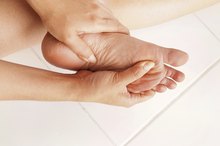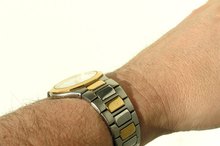What does fact checked mean?
At Healthfully, we strive to deliver objective content that is accurate and up-to-date. Our team periodically reviews articles in order to ensure content quality. The sources cited below consist of evidence from peer-reviewed journals, prominent medical organizations, academic associations, and government data.
The information contained on this site is for informational purposes only, and should not be used as a substitute for the advice of a professional health care provider. Please check with the appropriate physician regarding health questions and concerns. Although we strive to deliver accurate and up-to-date information, no guarantee to that effect is made.
Ketoconazole Cream Uses
Ketoconazole cream treats fungal infection on the skin 123. The medication interferes with the development of the cell membrane in the fungus, causing the death of the fungus. Side effects of the cream include an increase in skin irritation such as burning or itching. Ketoconazole treats several related fungal infections 123.
Tinea Pedis
Tinea pedis, commonly referred to as Athlete’s foot, causes burning, itching and pain between the toes. The fungus thrives in warm and moist environments. Applying ketoconazole cream--once a day for up to six weeks--helps to get rid of the fungal infection, according to Medline Plus 123. When applying the cream, it should cover the rash and the surrounding area. Continuing to use the medication for two weeks after the symptoms disappear helps prevent a reoccurrence of the infection, states RxList.com 3.
Tinea Cruris
Jock Itch Creams
Learn More
Similar to Athlete’s foot, tinea cruris is a fungal infection affecting the area around the genitals and the inner thighs. The infection, often called jock itch, appears as a reddened, itchy, ring-shaped rash. The ketoconazole cream, applied to the skin daily for up to six weeks, treats the infection 123. Continuing to use it for an additional two weeks after the initial improvement of the rash helps reduce the chance of a possible reoccurrence.
- Similar to Athlete’s foot, tinea cruris is a fungal infection affecting the area around the genitals and the inner thighs.
- Continuing to use it for an additional two weeks after the initial improvement of the rash helps reduce the chance of a possible reoccurrence.
Tinea Versicolor
Tinea versicolor is another fungal skin infection that causes dark patches to appear. Medline Plus states that one treatment with ketoconazole shampoo will treat the infection, but the cream normally requires two weeks of use, according to RxList.com 123. It may take longer for the skin to return to normal color after treating the fungus. The tinea versicolor can return after treatment, requiring an additional application of ketoconazole 123.
Cutaneous Candidiasis
Triamcinolone Acetonide for Treatment of Ringworm
Learn More
Cutaneous candidiasis is a skin infection caused by yeast. Most often, this skin infection appears as a diaper rash in infants. Ketoconazole treats the rash caused by candida 123. You may be able to combine the medicine with an traditional diaper rash cream.
- Cutaneous candidiasis is a skin infection caused by yeast.
- Ketoconazole treats the rash caused by candida 1.
Impetigo, Eczema and Psoriasis
Skin conditions such as impetigo, eczema and psoriasis may improve with ketoconazole cream 123. Impetigo is a skin infection caused by bacteria and causes blisters on the skin. Eczema causes dry and itchy skin, most often due to allergies. Psoriasis, commonly found on the scalp, elbows and knees, causes itching and areas of thickened red skin. A physician will help determine the length of time to use the cream for these conditions.
- Skin conditions such as impetigo, eczema and psoriasis may improve with ketoconazole cream 1.
- Impetigo is a skin infection caused by bacteria and causes blisters on the skin.
Related Articles
References
Writer Bio
Abigail Adams began her freelance writing career in 2009, teaching others about medical conditions and promoting wellness by writing on online health and fitness publications. She is educated and licensed as a registered nurse, having received her degree from North Georgia College and State University.









